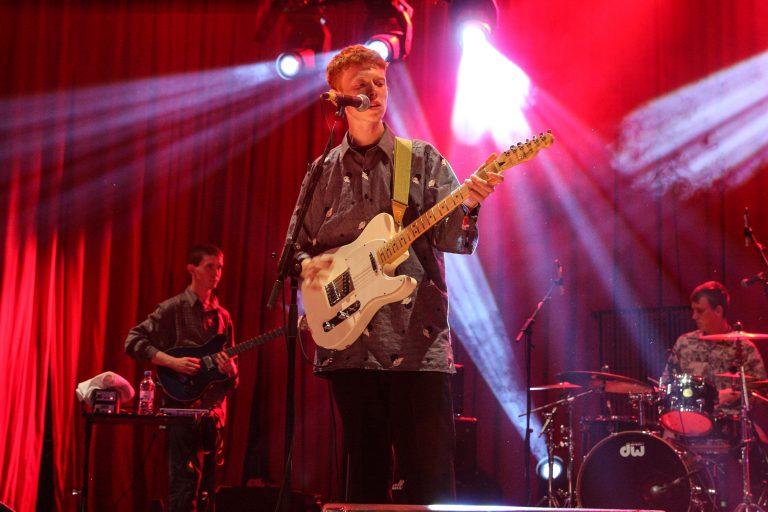
Sheila Tran
Few young musicians have earned the respect of music enthusiasts more than Archy Marshall, the 23-year-old English songwriter who took the music world by storm with his 2013 album “6 Feet Beneath the Moon. The album debuted to critical acclaim, garnering the then nineteen-year-old Marshall a cult following, public recognition via high-profile television show appearances, and a sold-out tour.
Four years later, Marshall has returned with his second album under the moniker King Krule, “The Ooz,” whose strange title somehow pefectly encapsulates the album’s mood.
“The Ooz” is Marshall’s most immersive and diverse album yet, drawing from genres such as jazz, blues, classic rock, and alternative R&B while the album maintains his distinctive, gritty sound. Marshall tackles topics such as depression, heartbreak, and loneliness which draw the listener deep into his psyche with simple and complex instrumentation, smooth crooning and restless hollering, romance and violence—tunes that are varied, human, and always evocative.
Unlike his first album, Marshall brings instrumentation to the forefront in “The Ooz.” The album marks a slight departure from the stripped-down, vocal-focused sound that fans know. The lead single, “Dum Surfer,” makes the new direction especially apparent with multi-layered guitar riffs, booming drums, psychedelic synths, and smooth trumpet croons, which work together to immerse the listener into the song’s chaotic depths.
In contrast to the romanticism of his debut album, “The Ooz” revolves more around lost connections and a lack of belonging. On “Sublunary,” Marshall sings, “I was made for sublunary / And in shades of blue lunacy,” which references the sublunary sphere, a term from Greek astronomy that describes an undefined location in space characterized by a lack of permanence and constant change. It’s easy to imagine how Marshall must have felt when he wrote the song: like an alien in his own world, trapped and isolated in a place that he can’t turn into a home.
The same sentiment is apparent in “Cadet Limbo,” a song with beautiful, melancholic, and jazz-influenced instrumentation. In this song, Marshall wonders, “Has it really been this long? / Since I got lost in space? / Has it been this long since I’ve had this bond?” Space, a recurring theme in his work, represents loneliness, isolation, and a lack of intimacy. Marshall produces his most compelling work when he is forced to make sense of his emotions and of his experiences.
“The Ooz” isn’t the easiest or most pleasant album to listen to, but Marshall has never worried about his music being easy to digest. His songs offer a look into the human psyche and explore complex emotions and muddled internal struggles that are represented in the visceral nature of his music.
“The Ooz” is a cathartic and honest journey into Marshall’s psyche that leaves listeners inclined to approach their own inward struggles and insecurities with the same forwardness that Marshall does. In the album’s eponymous track, “The Ooz,” Marshall muses, “Could we align? / Can we meet here?,” which extends an invitation to his listeners.
Marshall’s music speaks to a certain demographic of youth—to people who are lost, heartbroken, sad, and angry—and gives a voice to the unspoken struggles that many face in the effort to achieve their full potential. The resulting work encapsulates the teenage experience in a way that no other artist has quite done before.










